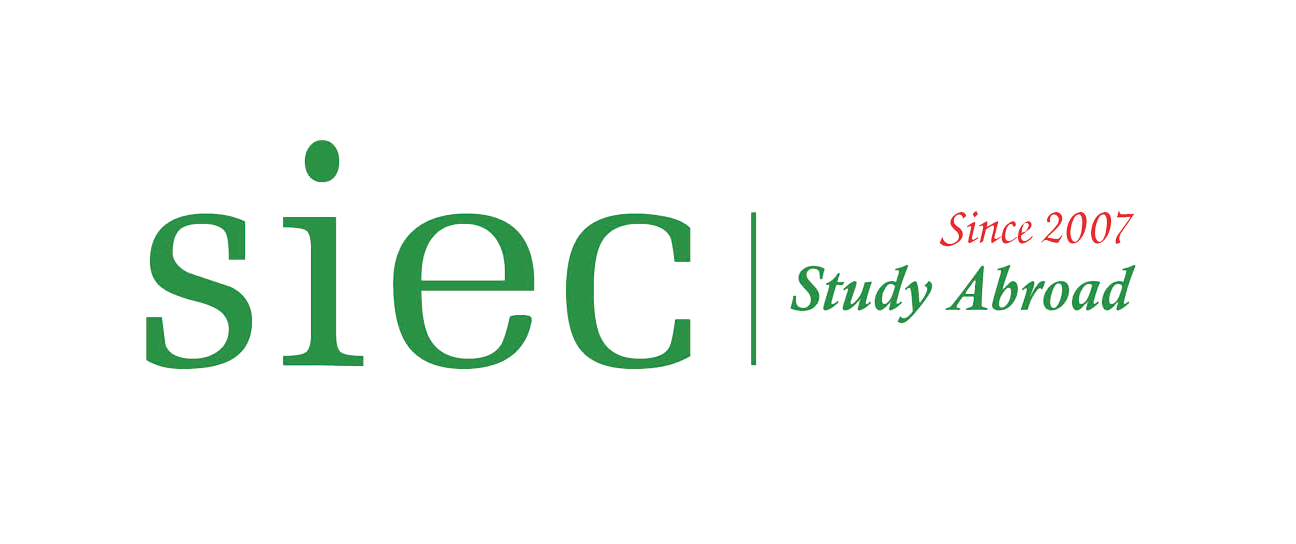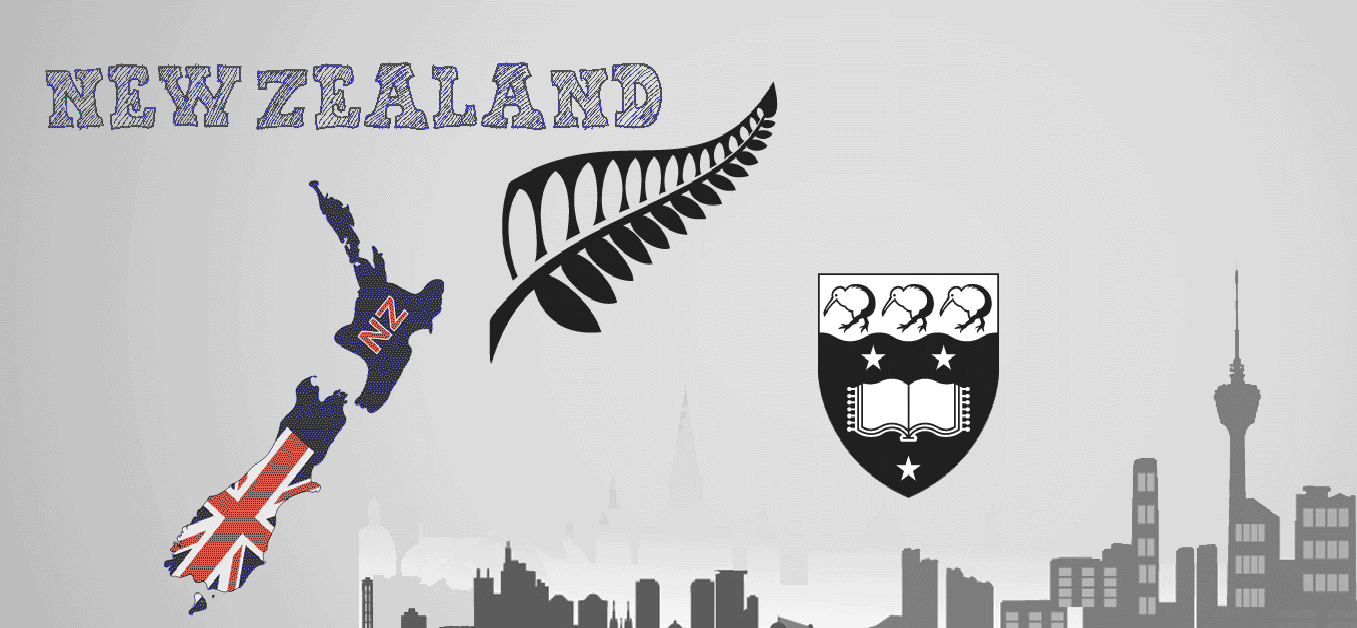
-
New Zealand: Những Sự Thật Đáng Ngạc Nhiên
New Zealand là một phần của lục địa “Zealandia,” trong đó có 93% dưới nước.
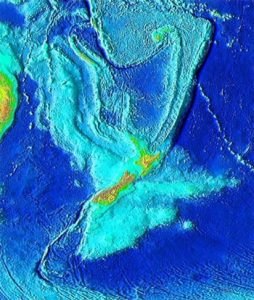
Lịch Sử Độc Đáo
New Zealand không có con người và không bị khám phá trước 800 năm.
Dân Số Đa Dạng
Hầu hết trong số 4.5 triệu người dân ở New Zealand là người gốc Châu Âu. Người dân tộc bản địa Maori chiếm phần lớn nhất với hơn 15%.
Nữ Hoàng Elizabeth II
Nữ Hoàng Elizabeth II là Nữ Hoàng của New Zealand và người đứng đầu nhà nước.
Ngôn Ngữ Chính Thức
Ngôn ngữ ký hiệu (Sign Language) là một trong ba ngôn ngữ chính thức của New Zealand.
Thủ Tục Khởi Nghiệp Nhanh Chóng
New Zealand là quốc gia nhanh nhất thế giới để bắt đầu kinh doanh: chỉ mất một ngày.
Lịch Sử Văn Hóa Maori
Khoảng năm 1300 sau Công Nguyên, người Polynesia đến định cư tại New Zealand và phát triển nền văn hóa Maori độc đáo.
Aotearoa – Tên Gọi Maori
“Aotearoa,” thường được dịch là “đất của đám mây trắng dài,” là tên gọi Maori hiện tại của New Zealand.
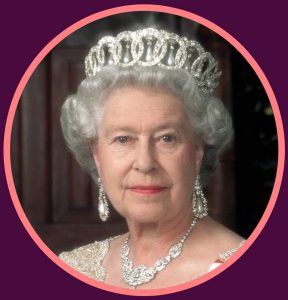
Quyền Bầu Cử Cho Phụ Nữ
New Zealand là quốc gia đầu tiên trong số các quốc gia hiện độc lập cho phép phụ nữ tham gia bầu cử.
Quảng Cáo Thuốc Tại New Zealand
Ngoại trừ Hoa Kỳ và New Zealand, việc quảng cáo thuốc trực tiếp đến người tiêu dùng là bất hợp pháp tại hầu hết các nơi trên thế giới.
Không Có Rắn Bò Sát
Không có loài rắn bò sát trên đất liền tại New Zealand.
Kháng Khuẩn Tới Tất Cả Loại Kháng Sinh
Năm 2013, một vi khuẩn tại New Zealand đã chống lại tất cả các loại kháng sinh được biết đến.
Xếp Hạng Cách Mạng Bản Danh
Theo Chỉ số Nhận Thức về Sự Tham Nhũng, New Zealand và Đan Mạch là hai quốc gia ít tham nhũng nhất trên thế giới.
Người Chuyển Giới Đầu Tiên Là Nghị Sĩ
Năm 1999, một phụ nữ từng làm nghề gái mại dâm ở New Zealand, Georgina Beyer, trở thành nghị sĩ chuyển giới đầu tiên trên thế giới.
Đường Dốc Đứng Dốc Nhất Thế Giới
Đường Baldwin St. ở Dunedin, New Zealand, có độ dốc lên đến 38°, là đường dốc đứng dốc nhất trên thế giới.
Bãi Biển Ninety-Mile Nhưng Chỉ Dài 55 Dặm
Bãi biển Ninety-Mile ở New Zealand chỉ dài 55 dặm.
Nhảy Dù Thương Mại
Khoảng nhảy dù thương mại có tổ chức đầu tiên bắt đầu tại New Zealand vào những năm 1980.

Cấm Cắt Móng Mèo
Cắt móng mèo là hợp pháp tại hầu hết các tiểu bang ở Hoa Kỳ, nhưng bị cấm ở ít nhất 22 quốc gia, bao gồm Đức, Phần Lan, Thụy Sĩ, Úc, New Zealand và Nhật Bản.
Logo của Không Quân Hoàng Gia New Zealand
Logo của Không quân Hoàng Gia New Zealand là con Kiwi, một loài chim không bay.
New Zealand Được Đấu Giá Trên Ebay
Năm 2006, một người Úc đã thử bán New Zealand trên Ebay với giá khởi điểm là AU$0.01 và đạt được AU$3000 trước khi Ebay đóng phiên đấu giá.
Từ Chối Visa Với Người Béo
New Zealand sẽ từ chối cấp visa cư trú cho những người béo. Đã có trường hợp bị từ chối vì béo phì.
Cấm Quảng Cáo Trên TV
New Zealand cấm tất cả quảng cáo trên TV vào các ngày Lễ Giáng Sinh, Lễ Phục Sinh, Good Friday và ANZAC Day.
Xâm Nhập Đài Phát Thanh
Năm 1996, một người đàn ông đã xâm nhập một đài phát thanh tại New Zealand, giam giữ quản lý và đòi đài phát thanh phát bài hát “Rainbow Connection” do Kermit the frog thể hiện.
Ốc Sên Khổng Lồ
Ốc sên ăn thịt khổng lồ sống tại New Zealand.
Đội Quân Tham Gia Thế Chiến I
Trong Thế Chiến I, New Zealand đã huy động một quân đội gồm 100,000 người đàn ông, chiếm khoảng 10% dân số.
Sự Chênh Lệch Lương Bằng Nhỏ Nhất Giữa
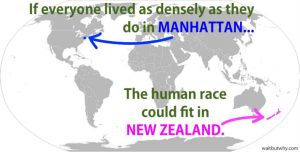 Nam và Nữ
Nam và NữSự chênh lệch lương bằng nhỏ nhất giữa nam và nữ được tìm thấy tại New Zealand, dưới 5%.
Tuatara – Loài Bò Sát New Zealand
Tuatara, một loài bò sát New Zealand tồn tại trước thời kỳ khủng long, có ba mắt.
Loài Chim Cánh Cụt Cổ Điển Nhất
Loài cánh cụt hoá thạch cổ đại nhất được biết đến đã sống vào thời kỳ Paleocene đầu ở New Zealand, cách đây khoảng 62 triệu năm.
Quả Bom Sóng Thần
Trong Thế Chiến II, Hoa Kỳ và New Zealand đã thử nghiệm 3,700 “quả bom sóng thần” thiết kế để phá hủy các thành phố ven biển.
Diện Tích Dân Cư
Nếu mọi người sống cách nhau như ở Manhattan, loài người có thể thỏa sức sống trong New Zealand.
Tên Lạ Cho Trẻ Sơ Sinh
Tòa án ở New Zealand đã cho phép đặt tên cho một đứa trẻ là “Number 16 Bus Shelter.”
Tỷ Lệ Tù Tội Cao Trong Cộng Đồng Maori
Người Maori bản địa của New Zealand chỉ chiếm 15% dân số nhưng lại chiếm hơn 50% dân số tù tội.
Quốc Động Vật – Kiwi
Kiwi là động vật quốc gia của New Zealand.
Cuộc Nổi Loạn Của Người Mỹ
Trong Thế Chiến II, binh sĩ Mỹ đã gây nổi loạn ở New Zealand vì họ không muốn chia tách các quán bar theo màu da và không muốn uống cùng người không phải da trắng.
Tổng Thống Say Rượu
Năm 1984, Thủ tướng New Zealand đã say rượu và quyết định tự ý tạo ra cuộc bầu cử tổng thể. Ông đã thất bại trong cuộc bầu cử này.
Donald Trump – Người Được Tìm Kiếm Nhiều Nhất
Donald Trump là người được tìm kiếm nhiều nhất trên Google vào năm 2016 tại 88 quốc gia, bao gồm Mexico, Tây Ban Nha, Nam Phi và New Zealand.
Hang Rào Nội Y Ở New Zealand
Sau khi khách du lịch bắt đầu treo áo lót trên một cái hàng rào ở nông thôn New Zealand, trào lưu này lan rộng và
 tạo nên “Hang Rào Nội Y Cardrona,” một điểm thu hút du khách phổ biến.
tạo nên “Hang Rào Nội Y Cardrona,” một điểm thu hút du khách phổ biến.Vụ Kiện Tên Cho Đứa Trẻ
Năm 2012, chính phủ New Zealand đã khởi kiện để ngăn một cặp vợ chồng đặt tên cho con họ là “Anal.”
Như vậy, đây là một số sự thật thú vị về New Zealand mà bạn có thể chưa biết. Đất nước này không chỉ có cảnh quan thiên nhiên đẹp mắt mà còn có nhiều khía cạnh độc đáo và đa dạng trong văn hóa và lịch sử của nó.
Hệ thống giáo dục tại New Zealand: Một Sự Kết Hợp Xuất Sắc giữa Lý Thuyết và Thực Hành
Hệ thống giáo dục tại New Zealand là một trong những hệ thống giáo dục hàng đầu trên thế giới và đa dạng đến khó tin. Với mức độ đọc viết, toán học và khoa học đứng đầu thế giới, New Zealand thật sự tỏ ra xuất sắc. Hệ thống giáo dục công lập tại đây nhận được sự đầu tư tài chính tốt nhất, với tỷ lệ tài trợ công cộng cao nhất trên toàn cầu. Nhiều chỉ số đánh giá New Zealand là quốc gia hàng đầu trên thế giới về lĩnh vực giáo dục.
Tại sao New Zealand đặc biệt?
Sự độc đáo của New Zealand trong lĩnh vực giáo dục có nguồn gốc từ nhiều yếu tố. Trước hết, người dân New Zealand tin vào việc cung cấp mọi người một sự giáo dục mà họ xứng đáng nhận. Mặc dù có nhiều trường tư thục, nhưng do chính phủ New Zealand rất tận tâm trong việc tài trợ cho hệ thống giáo dục công lập, nhiều phụ huynh vẫn hạnh phúc khi đưa con cái của họ vào hệ thống công lập.
Yếu tố thứ hai là hệ thống giáo dục tại New Zealand tập trung vào cả hai mục tiêu: thực hành và học thuật. Thay vì tuân theo một chương trình học mà ít người thực sự hiểu và không đem lại giá trị thực sự, hệ thống giáo dục công lập tại New Zealand tập trung vào tư duy linh hoạt và khuyến khích trẻ em khám phá, giúp họ học hỏi theo cách tốt nhất. Điều này giúp chuẩn bị cho họ sẵn sàng cho đại học hoặc thế giới làm việc sau khi hoàn thành giáo dục trung học.
Giáo dục Tiểu Học và Trung Học
Hầu hết các trường tiểu học và trung học có lịch học cố định, thường từ 9 giờ sáng đến 3 giờ 30 chiều. Học sinh đi học quanh năm, với bốn kỳ học phân bố đều:
- Kỳ 1: Từ tháng 2 đến giữa tháng 4.
- Kỳ 2: Từ cuối tháng 4 đến đầu tháng 7.
- Kỳ 3: Từ giữa tháng 7 đến cuối tháng 9.
- Kỳ 4: Từ giữa tháng 10 đến giữa tháng 12.
Có một khoảng nghỉ hai tuần giữa các kỳ học: giữa kỳ 1 và kỳ 2, giữa kỳ 2 và kỳ 3, và giữa kỳ 3 và kỳ 4. Giữa kỳ 4 và kỳ 1 năm học tiếp theo, có một kỳ nghỉ mùa hè kéo dài 6 tuần, từ giữa tháng 12 đến hết tháng 1.
Có ba loại trường tiểu học và trung học bạn có thể thấy ở New Zealand:
- Trường công lập: Những trường này miễn phí, với các chi phí nhỏ cho sách giáo trình, dụng cụ học tập và đồng phục (nếu sử dụng; hầu hết các trường ở New Zealand có đồng phục). Trường mà một đứa trẻ tham gia dựa trên địa chỉ cư trú; các phân chia có thể được tìm thấy tại đây.
- Trường tôn giáo liên kết với nhà nước: Có một số trường tôn giáo (Công giáo) đã được liên kết vào cơ cấu trường học công lập. Đây là lựa chọn cho những người muốn con cái của họ nhận giáo dục tôn giáo. Những trường này miễn phí, với các chi phí nhỏ cho sách giáo trình, dụng cụ học tập và đồng phục.
- Trường tư thục: Trường tư thục có giá từ 4.000 đến 28.000 đô la một năm. Chúng có thể là trường tôn giáo, nhưng cũng có thể tập trung vào học vấn hoặc cung cấp các tùy chọn theo yêu cầu của phụ huynh.
Có sự khác biệt giữa trường tiểu học và trung học, nhưng học sinh phải tham gia học tập từ 6 tuổi đến 16 tuổi. Dưới đây là một số điểm khác biệt bạn sẽ thấy:
- Tiểu học: Từ 6 đến 12 tuổi, trẻ em tham gia trường tiểu học. Hầu hết các trường tiểu học có 23 đến 29 học sinh mỗi giáo viên, đôi khi ít hơn nếu đó là trường tư thục hoặc trường tôn giáo. Trường tiểu học có thể bao gồm mầm non, nhưng cũng có các mầm non hoạt động độc lập. Việc tham gia mầm non không bắt buộc.
- Trung học: Được gọi là “trường trung học” hoặc “trường cao đẳng,” trường trung học có một giáo viên cho từ 17 đến 23 học sinh; đôi khi số lượng học sinh một giáo viên có thể thấp hơn nếu đó là trường tư thục hoặc trường tôn giáo. Mỗi trường trung học sử dụng chương trình học thực tiễn để giúp học sinh chuẩn bị cho thế giới công việc hoặc giáo dục đại học, và chương trình học được quy định bởi Văn phòng Đánh giá Giáo dục của Chính phủ. Một số trường trung học cho phép học sinh cấp trung tham gia Kỳ thi Quốc tế Cambridge hoặc Chương trình Baccalaureate Quốc tế, giúp họ có điểm tín chỉ và được công nhận trong các chương trình giáo dục đại học trên toàn cầu.
Giáo dục Đại Học
Giáo dục đại học là vô cùng quan trọng và chúng ta sẽ khám phá thêm trong các phần tập trung vào hệ thống giáo dục đại học. New Zealand có tám trường đại học trên khắp quốc gia, cùng với 18 trường công nghệ và hơn 600 trường đào tạo chuyên về các kỹ năng cụ thể. Năm trường đại học tại New Zealand được coi là trong danh sách 50 trường đại học hàng đầu thế giới theo xếp hạng QS World Top 500. New Zealand nổi tiếng với lĩnh vực kinh doanh, công nghệ, kỹ thuật, y học và khoa học sinh học, và các trường đại học ở đây là hàng đầu thế giới. Chương trình giáo dục đại học được chính phủ New Zealand tài trợ cho cư dân thường trú.
Tương tự như bạn mong đợi từ người Kiwi, hệ thống giáo dục đại học tại New Zealand cũng khá thoải mái. Mặc dù bạn phải đáp ứng các yêu cầu nghiêm ngặt và thực hiện các nhiệm vụ cụ thể để duy trì thị thực sinh viên, nhưng nó không bao giờ cứng nhắc như việc học tại các trường Ivy League ở New England hoặc nhóm Eight ở Australia. Bạn sẽ nhận được một giáo dục tốt mà không phải đánh đổi sức khỏe tinh thần của mình, đó là một lợi ích tuyệt vời cho bất kỳ ai.
Như bạn có thể thấy, hệ thống giáo dục từ trường tiểu học đến đại học đều là một mục tiêu quan trọng đối với người dân New Zealand. Đây là lý do tại sao nhiều người quyết định cho phép con cái tham gia các chương trình trao đổi và tại sao sinh viên đại học sẽ dành cả sự nghiệp học thuật của họ tại New Zealand. Tập trung vào giáo dục chơi một vai trò rất lớn trong thái độ tổng quan về giáo dục. Nó được coi là quan trọng và thái độ này lan tỏa vào mọi khía cạnh của cuộc sống Kiwi. Bất kỳ ai cũng có thể đạt được mục tiêu của mình, bất kể giáo dục họ quyết định theo đuổi.
Để biết thêm thông tin về giáo dục tại New Zealand, bạn có thể truy cập trang web của Bộ Giáo dục, nơi bạn có thể tìm hiểu thêm về cách hệ thống giáo dục được cấu trúc và các luật lệ liên quan. Một nguồn thông tin khác là trang web Study in New Zealand của Giáo dục New Zealand, có thể cung cấp thông tin chi tiết về các luật lệ và các trường học trên khắp đất nước.
Để biết thêm chi tiết về cơ hội du học tại New Zealand, vui lòng liên hệ với Trung tâm Tư vấn Du học SIEC:
Trung tâm Tư vấn Du học SIEC đã đồng hành cùng nhiều học sinh và sinh viên trong việc thực hiện giấc mơ du học tại New Zealand. Chúng tôi có đội ngũ chuyên gia du học có kinh nghiệm để giúp bạn với quá trình tìm hiểu, chọn trường, và xin visa du học. Liên hệ với chúng tôi để biết thêm thông tin chi tiết và hỗ trợ:
Trung tâm Tư vấn Du học SIEC
- Địa chỉ: 99 Nguyễn Thanh Tuyền, Phường 2, Tân Bình, Tp. HCM
- Số điện thoại: 028 2247 3877
- Email: siec@siec.com.vn
- Website: www.siec.com.vn
Chúng tôi rất vui lòng được hỗ trợ bạn trong việc thực hiện hành trình du học đầy thú vị tại New Zealand. Hãy liên hệ với chúng tôi ngay hôm nay để bắt đầu!
Cảm ơn bạn đã đọc bài viết này và chúng tôi hy vọng rằng nó đã giúp bạn hiểu rõ hơn về hệ thống giáo dục tại New Zealand.


